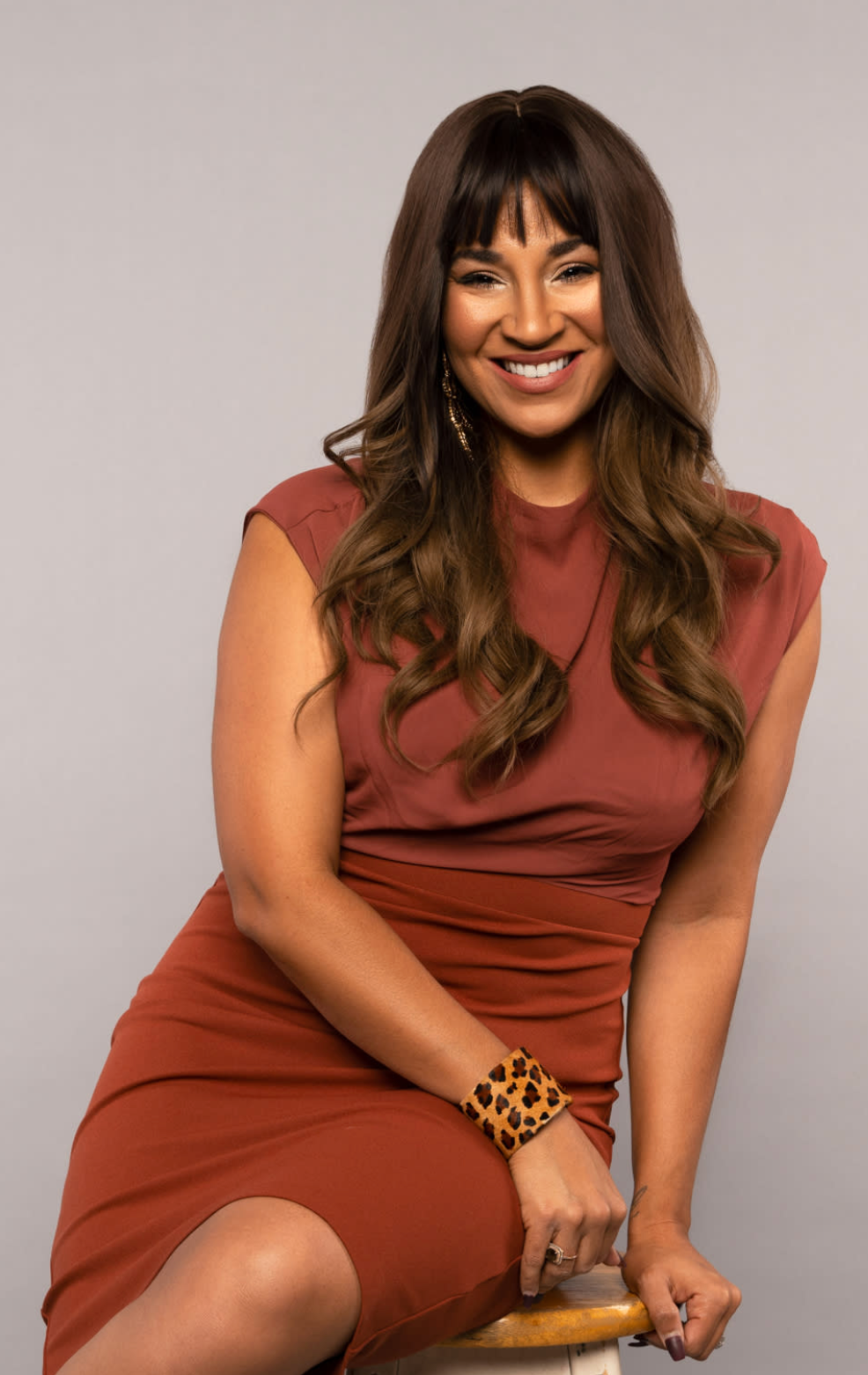The 50 States Project is a yearlong series of candid conversations with interior designers across the country about how they’ve built their businesses. This week, Charles Town, West Virginia–based designer Marissa Whitley Tago tells us why she took her entire business online, how her long journey into the design industry has made her better at her job, and the Zoom call that gave her the confidence to grow at her own pace.
What are your earliest memories of being drawn to design?
I have a really early memory sitting in my living room on an amazing oversized rug with beautiful colors, and the space just felt warm to me. I don’t remember anything about the furniture, but I remember that there were sheers in front of our windows and lots of green plants. That’s what my mother created, even though she was a single mother on welfare raising four small children, and it was part of my upbringing to see and feel what she was able to create within our home. Then she passed away and I was adopted by my aunt—she graciously took me and my oldest sister, and we moved to Missouri, which is where I grew up. My middle sister and brother were adopted by another aunt and uncle, but we were able to see each other through the years.
It’s so beautiful that it’s really the feeling of home you remember.
We have Polaroids of the home that my mother created, too, and they’ve always stuck with me. When you look at them, you can see that she created the tie-dye drapes, tended to the plants, and intentionally tried to really make our house a home, regardless of how much money we had or didn’t have. Subconsciously, that played a huge role in me wanting to do the same for the spaces that I was inhabiting.
My aunt was my backbone, and she was someone who saw a love of life in me. She allowed me to rearrange my own room, and to use my love of design, which she obviously saw, to have freedom to create in my own space. The pictures that I had to develop at Walgreens—I still have them all because I get to see what I did in my room through the years growing up. There was the basketball kick, where I have bulletin boards full of female basketball players long before the WNBA. There’s another picture where I put a border of People’s ’50 Most Beautiful People’ around my room. I remember doing aerial floor plans of where couches and tables and lamps would go long before I knew that this was something that I could actually do—I just doodled, and that was always there. I also cleaned our house top to bottom, and that was a real joy—I didn’t think that it was a chore, which is awfully strange. I Windexed, dusted, vacuumed, rearranged our mantel, styled our bookcases—I even remember going to my friends’ homes for sleepovers, and I’ve always been an early riser, so they’d wake up to a rearranged room that didn’t have any clutter on the floor and their bookcases were rearranged. Now, I look back thinking, “That’s awfully rude to do.” But at the same time, I didn’t have anything else to do—it was long before cell phones—and that was totally my love language.
My love of design also came from my oldest friend and neighbor. She owned her own clothing and accessories business, and was my first employer. She showed me what interior design was all about when she made over my room in high school with fresh paint and a trip to Pier 1—an eye-opening experience that single-handedly showed me how changing your interior space affects you for the better. She showed me things like how to plant the bulbs in her garden, how you can put a belt on an outfit to change the overall look—she was my biggest and most profound mentor who showed me that how you listen to someone ultimately gives them an experience that is felt and not just seen.
Where did you go professionally when you were young?
I think subconsciously, I always felt like there was an expiration date to my life because my mother was so young when she died. It created a very strong entrepreneurial spirit in me—I wanted to do everything. I wanted to experience all that life would allow me to experience. I wanted to say “yes” to things before I wanted to say “no.” When I was 18, I ended up winning the Miss Teen USA pageant, which took me to New York just a few days before 9/11. I took the fall semester off from college and lived in Manhattan for half of the year to experience something that I had only dreamed about. To be immersed in the city—I had only seen New York on TV and in movies before that, and [being there] opened me up to this luxurious, high-end world of the finer things. After that, I became a college student and traveled on the weekends with my title. I withdrew from college and moved back to New York when I got a job at MTV in 2003; after a short stint there, I was waiting tables in New Jersey and struggling to figure out my next move.
Was design still omnipresent in your life then?
It was something I would do for fun—I would help a coworker clean out her closet or rearrange her space on the weekends or when I had a day off. Eventually, I moved to Chicago, where I worked in marketing for a nonprofit—and where I rearranged their entry and deep-cleaned their entire space on the first day. I think it was Oprah who said something like, “Every day that you’re not doing what God has put you on this planet to do, a part of your soul dies,” and that’s what all of those jobs felt like to me. I would learn, enjoy who I was working with, and gain all the skills that I needed, but deep down, I knew that I wasn’t doing what I was meant to be doing.
Did you know that design was the thing you were meant to be doing?
No, I was on autopilot: Get up, go to work. I started taking acting classes in Chicago, and I thought I wanted to be an actor. I loved being immersed in the dialogue, memorizing monologues and putting up scenes. I stayed in Chicago for three years, then moved to Los Angeles in 2007—and [it didn’t work out but] I’m glad that I did because it prepared me for all the little nuances of speaking on camera, being comfortable with who I am and what I look like on camera, and the judgment that comes with it. After living the temp life for some time, I landed at Cypress Land Company, a commercial property company, where I organized their blueprints, imported images from site visits and learned more about large commercial properties in general.
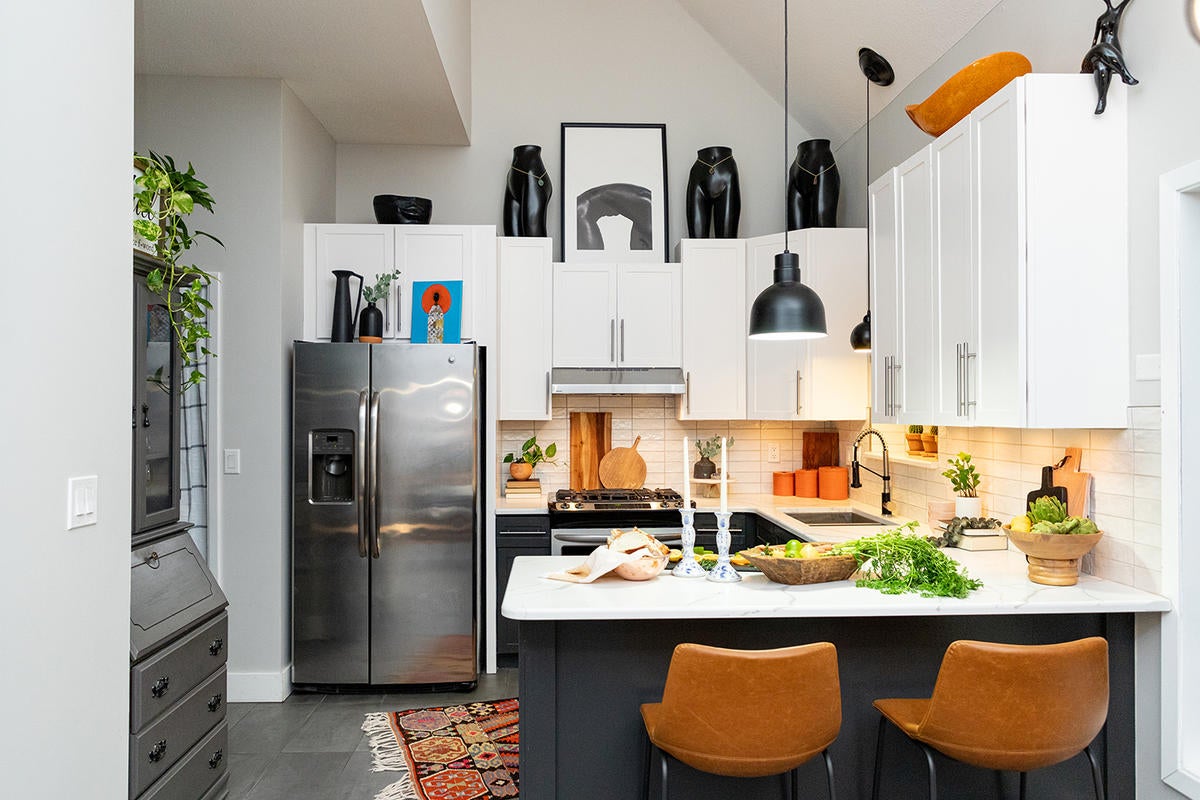
What was the impetus in 2018 for starting the Whitley Company? How did you know you were ready? Why was the timing right?
It took a lot of steps to get there. When I moved back to Missouri from L.A., my lifelong next-door neighbor was moving out of her house after 50 years and she asked if I would help her put on a garage sale. There was a young lady who came to the garage sale to shop that I instantly hit it off with. Shortly after that, I was meeting this new friend at the mall, getting Starbucks, when I met the man who would become my husband. They had gone to high school together. He was on leave from the Navy, they hadn’t seen each other in four years. We instantly hit it off, and we spent the next 11 days together until he left. Fast-forward to today, and we have three kids, we’ve done three deployments, and we bought a house here in Charles Town.
But back in 2014, I had two young girls, my husband was away for weeks at a time, and we were living on base housing in Virginia. I didn’t have to work to survive anymore—that is a luxury that not everyone is afforded—and so I spent a lot of time thinking, “What is it that I want to do with the rest of my life? And what will make time away from my kids worth it?” I somehow saw that the Art Institute had an accredited interior design program that was all online, and I thought, “OK, let me just call to see what this program is about.” I loved everything I heard about it, and I started that day. I wrote my entry essay while I was still [talking to an admissions officer] on the phone, and I went to school for the next three years full-time, taking no breaks to get my degree. I graduated on December 26, 2017, and it was the best Christmas present to myself.
What made you want to start your own business?
I had my son—and having three kids under the age of 7, I knew I had to have flexibility. I’ve also always wanted to own my own business, and I’ve always known how to juggle a lot. Obviously, design is highly creative and highly personal, and I didn’t want to create designs for another firm—if I was going to do it, I wanted to do it my way. But I also didn’t want it to be too much too soon, so I started with the basics. I built out my own website on Wix, which I still oversee and update myself. I’ve created all of my content in Canva. I’ve been mindful of not biting off more than I can chew, and I take on the projects that I feel inclined to take on, regardless of how much money they’re going to spend—and even the mundane and monotonous parts are magic to me. I get to have an adventure every day, and it never really feels like work. The admin side is tedious, but it’s all part of what it takes. I always think back in all of the mottos from my basketball program in high school—sayings like “Whatever it takes” or “Success is a journey, not a destination.” They’re all so cliche and cheesy, but they’re also so true. I can get hard on myself and say, “Man, I’m old, and all these people that are starting off at age 20 have such a leg up on me. But I have so much life experience—everything about starting my business has worked out organically, just like my entire life journey up to this point.
How did you wind up in West Virginia?
A year ago, we had no idea we were even moving here. My husband got a job offer right before Christmas, and we moved January 13th. To go on another adventure was like, “Why not?” I was doing virtual design by that point because of the pandemic, and I thought, “Now is the time to move, because I can do this from anywhere for anyone.” We’re in a small town, and I found a historic house to update slowly—we just did the powder room for the One Room Challenge this fall, which I did for the first time.
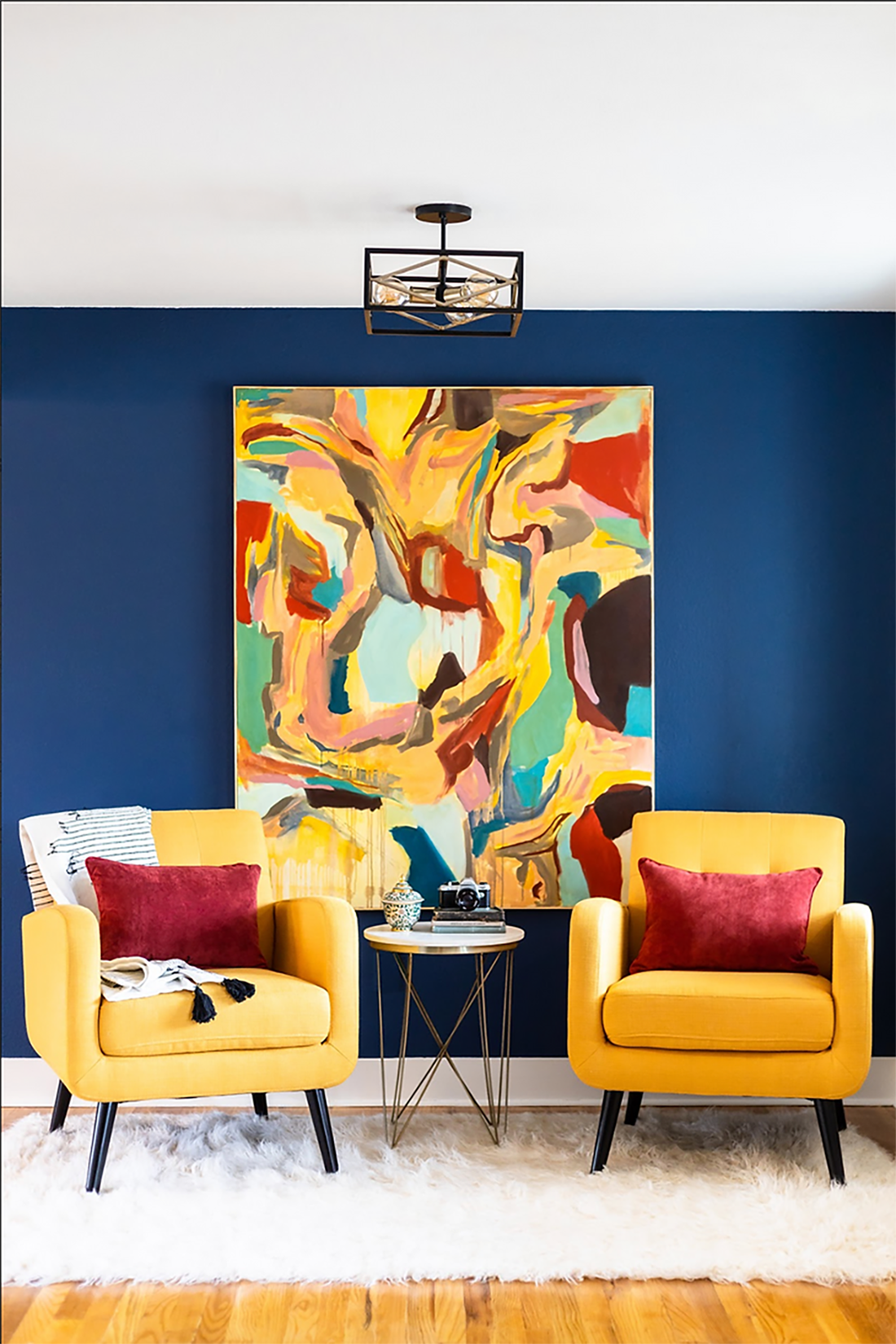
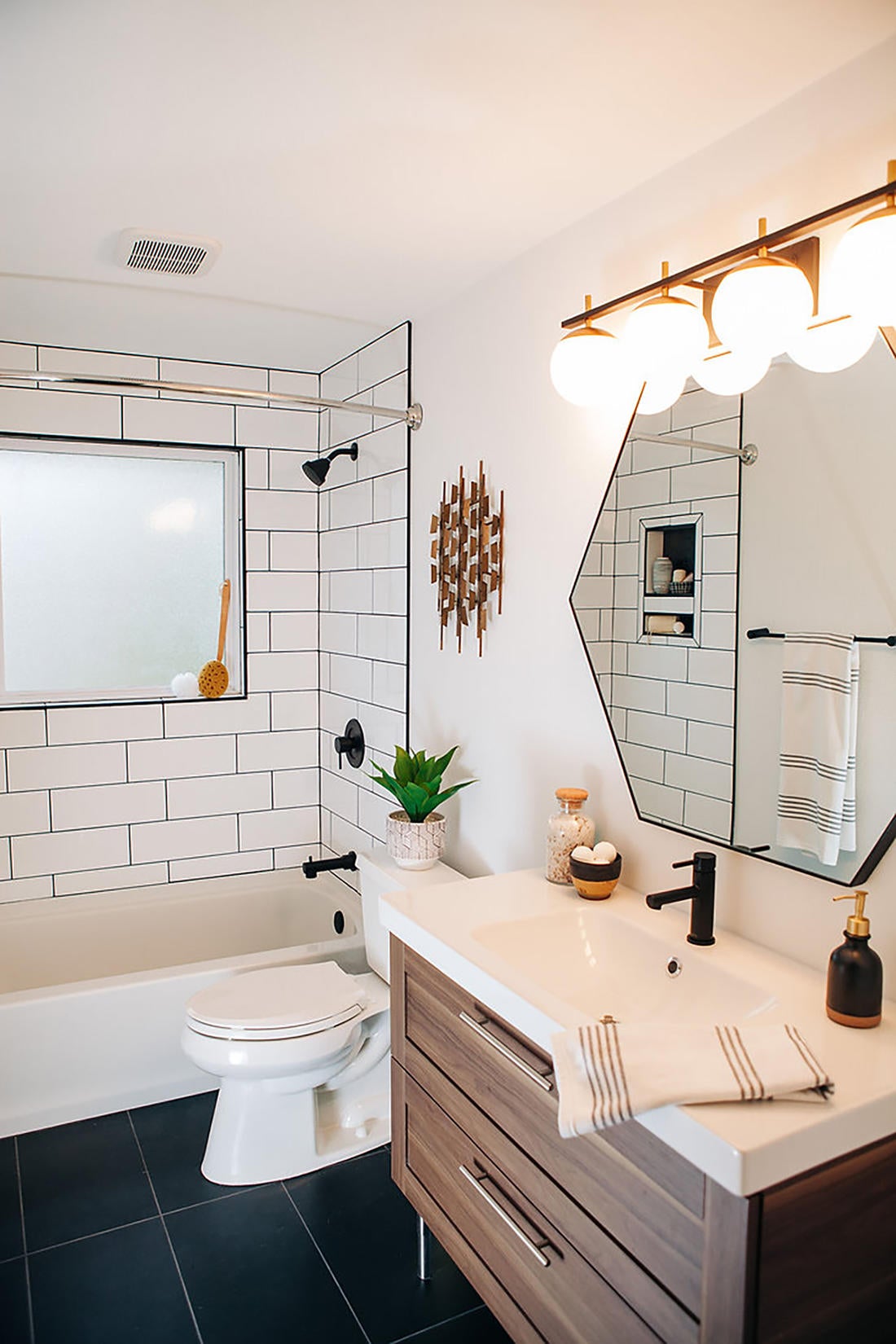
How many projects are you typically working on?
I feel very comfortable between five and eight projects, depending on the scope. At one point, I had two ground-up custom-build homes that were coming together at the same time, and then smaller projects like a paint consultation and sourcing art. I love having more than one thing going on, but I never want to lose the quality of work or the ability to fully communicate. Right now, I’ve got seven projects happening—in Destin, Florida, and Miami, and a lot that are still in Colombia, Missouri.
So is most of the work you’re doing exclusively e-design?
I start with a virtual consultation where I’m able to “meet” them and see the space. I take images while we’re online together, and then they send me dimensions and images of the space. From there, I can either select the materials and finishes for them, or we can actually get down and dirty with the contractor and architect to redline architectural plans if they’re going to build a new home. It’s everything from new decking to custom-build homes to sourcing art and furniture for a new house. It runs the gamut, but it’s all exclusively virtual at this point.
How does that work?
If we’re going to check out countertops, I’m on a call walking through it with them, and they’re taking images and sending them back. I’m compiling those images into a presentation on Google Slides, so it’s highly interactive and they’re able to see how everything creates a cohesive design. For much of the process, it’s like I’m there, but I’m really just in their pocket.
How do you approach billing for that sort of collaborative relationship with a client?
That’s my biggest challenge. With design, you’re working all the time, and you never fully feel like you’re getting compensated for the mental time, but the physical time is much easier. Texting is where it gets especially challenging. I want clients to be able to reach out to me, but you never know the level of interaction that you’re going to have. At this point, I want them to have the best experience with me as a designer, but I really try to shut down my phone at 7 p.m. at night—lately, I physically have my phone hibernate from 7 p.m. to 7 a.m., because otherwise messages would be coming in all night. My husband was telling me, “You’re running yourself ragged, and you’re going to burn yourself out.” He was right, because it’s in my nature to go and go and go.
I have started offering packages with a certain amount of hours—I got that from Veronica Solomon, who has been a wonderful mentor. I have MyDoma, and if I’m working solely on a project, I will put its stopwatch tool on to log my hours; I’ve gotten to the point now where I can tell, “OK, I worked 20 minutes on that,” and I make a note of which projects I worked on at the end of the day—but when you have 15 that you’re juggling, it’s a lot.
I’m always trying to tell myself, “I’m going to work on this for an hour,” but when you’re looking for one thing and you see something else for a different client, it just is what it is. I think billing is really the hardest part of the whole process because you always have design on your mind, and it is always there—you can’t turn it off. So often, it’s when I’m driving or handwashing my dishes that an idea comes to me. That’s when the magic happens. I’m just grateful that I have a creative epiphany, and you’re never going to get compensated for that. But for me, that’s not where the Whitley Company came from, and that wasn’t why I started it.
What do you mean by that?
I just feel like the energy that I put out, I’m going to get back. I want my clients to come back to me for their next space, and maybe I will have figured out the billing a little bit better by then. As each project progresses and you take all of the time into account, it helps you for the next project. It helps you realize, “I thought that was going to take me 12 hours, but it took me 22 hours.”
You mentioned that Veronica has been a mentor to you. How did she help you along?
She has such a beautifully simple, yet structured way of running her business. My husband booked me a one-on-one session with her for Mother’s Day last year, and just to sit with her for an hour over Zoom made me feel like, “OK, I don’t have to scale right away, because it’s just her—she was a one-woman show [for so long].” I don’t have to have a huge team, and I don’t have to be Studio McGee. There’s a reason why I am where I am right now, and that’s OK. I feel like that’s what she gives the community: Wherever you are, you’re OK. You’re going to make mistakes. It’s honest, and it’s forthright. She’s a God-fearing woman, and that’s the base of everything she does. The fact that she started late, too—there’s just so much tenacity and persistence. Just being able to read her feed and life lessons mixed in with design lessons—what more can you ask for?
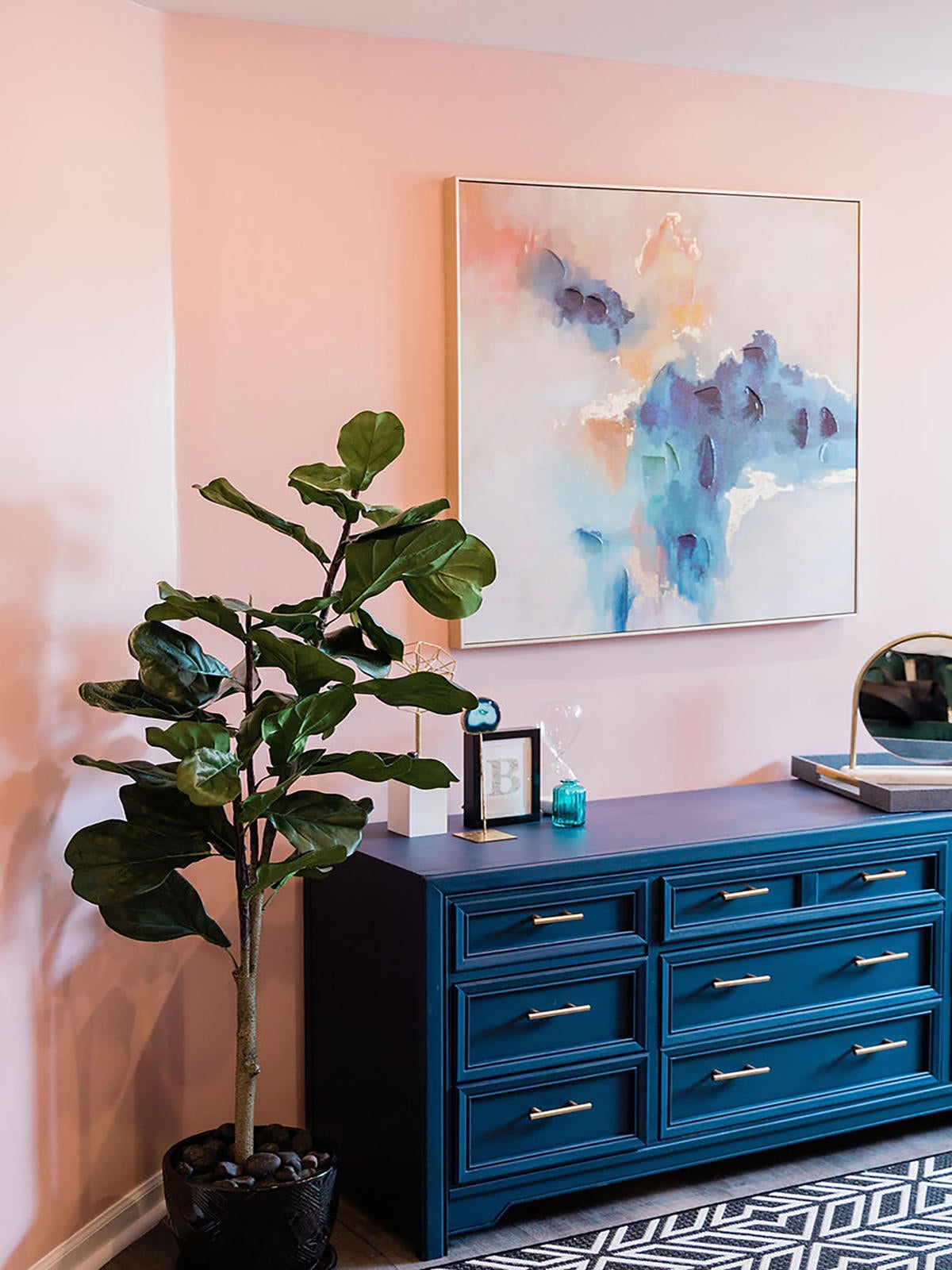
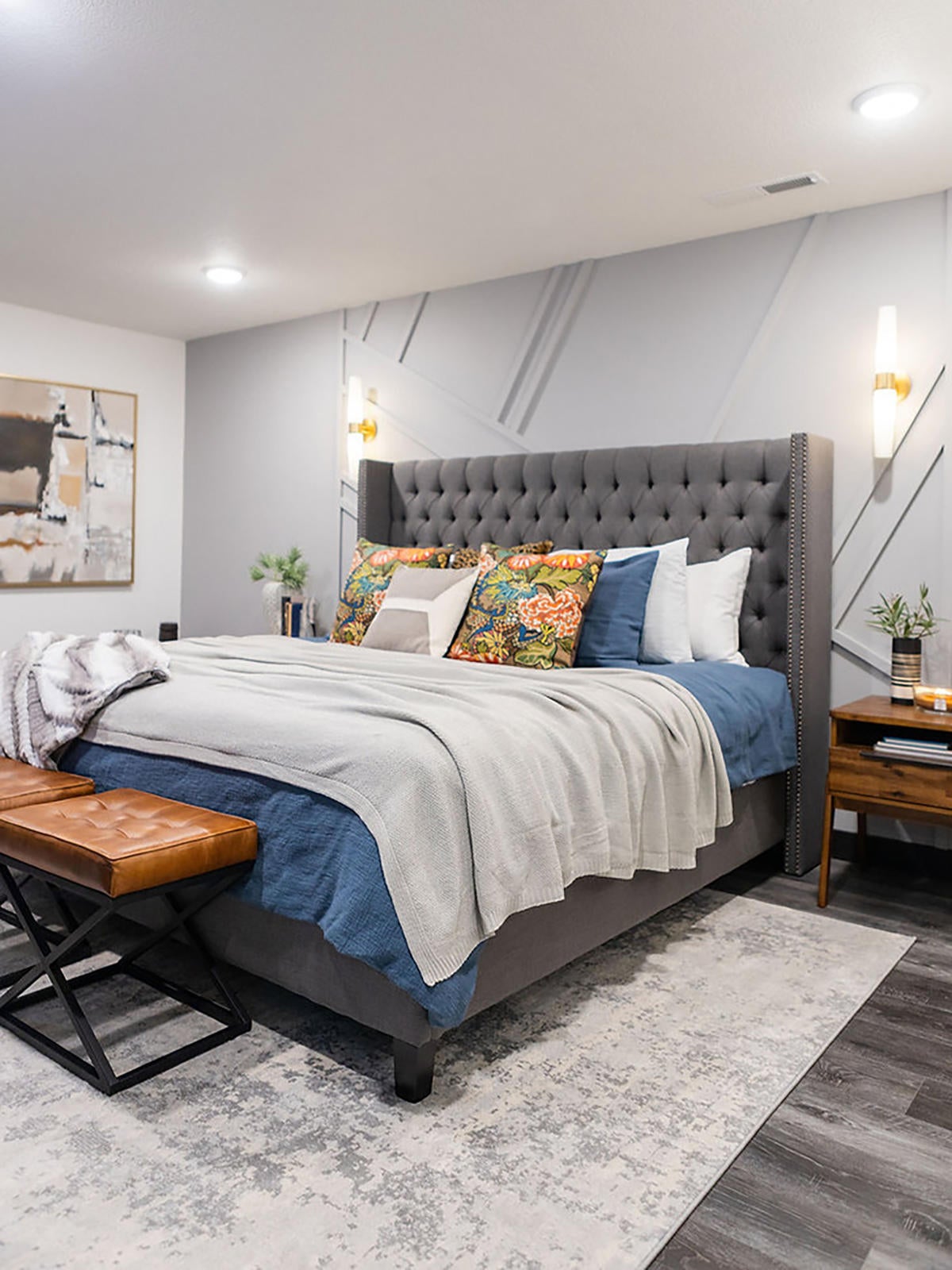
What types of clients and what size projects and what sort of the scope of work is sort of the sweet spot for you right now?
I don’t have a budgetary dream—that’s not something that gets me going. If it’s stirring to me in some way and I want to be a part of it, that’s when I know we’re going to make it work, even if you have to pay me in installments.
A dream client for me is someone who’s open to working with me in creating something that they can’t really even envision yet. Having an open mind to working on something with me without reservations is really all I ask for, because that’s really where good design starts. It’s about pushing that client outside of where they normally would go and finding that one piece or that one element that they are on the fence about—it always becomes the piece that is their favorite. I love facilitating that, and I love being able to lead them down the path.
What does growth look like for you? Where do you see opportunities as you look ahead?
But 2022 is already super exciting for me as a business owner and just being able to do more firsts. I really feel like 2022 will have more growth for the Whitley Company than the four years prior, and I’m looking forward to engaging with this new landscape that I’m in here in West Virginia. I’ve done the antique and the flea markets, and I’ve picked up paint at Benjamin Moore, but I haven’t really immersed myself in this area the way I would like to. And I am definitely going to go to High Point Market for the first time—I can drive down to North Carolina from here, and I am so excited! I also just joined the NKBA, and I would love to go to KBIS. When I was first starting out, my focus was on my processes; now, it’s the time to enjoy being blown away by all of the vendors.
What is the biggest thing you know now that you wish you had known in 2018 when you’re really kind of launching your business?
There is no expiration date or hidden timeline for your business or for your life. It really comes in waves, and you will be able to endure both the slow and the fast times—and there are lessons to be learned during both. Your designs are better for every journey that you’ve taken.
To learn more about Marissa Whitley Tago, visit her website or find her on Instagram.
















